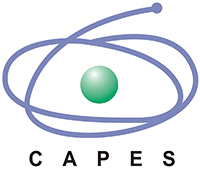|
|
-
Adriano Stephan Nascente, Embrapa Arroz e Feijão, Santo Antônio de Goiás, GO, Brasil, adriano.nascente@embrapa.br
-
Alexsander Seleguini, Universidade Federal do Triângulo Mineiro (UFTM), Iturama, MG, Brasil, alexsander.seleguini@uftm.edu.br
-
Ali Raza, Oil Crops Research Institute (OCRI), Wuhan, Hubei, China, alirazamughal143@gmail.com
-
Antônio Cordeiro de Santana, Universidade Federal Rural da Amazônia (UFRA), Belém, PA, Brasil, acsufra@gmail.com
-
Antonio Nolla, Universidade Estadual de Maringá (UEM), Umuarama, PR, Brasil, anolla@uem.br
-
Cláudia Sales Marinho, Universidade Estadual do Norte Fluminense Darcy Ribeiro (UENF), Campos dos Goytacazes, RJ, Brasil, claudia.marinho@uenf.br
-
Cristina Batista de Lima, Universidade Estadual do Norte do Paraná (UENP), Bandeirantes, PR, Brasil, crislima@uenp.edu.br
-
Daniel Felipe de Oliveira Gentil, Universidade Federal do Amazonas (UFAM), Manaus, AM, Brasil, dfgentil@hotmail.com
-
Elena Castillo-Lorenzo, Kew Royal Botanic Gardens, London, United Kingdom, E.CastilloLorenzo@kew.org
-
Elisabete Tavares Lacerda de Figueiredo Oliveira, Universidade de Lisboa, Lisboa, Portugal, elisalacerda@isa.ulisboa.pt
-
Érico de Campos Dianese, Universidade Federal de Goiás (UFG), Goiânia, GO, Brasil, edianese@ufg.br
-
Evandro Novaes, Universidade Federal de Lavras (UFLa), Lavras, MG, Brasil, novaes_ufg@yahoo.com
-
Fábio Venturoli, Universidade Federal de Goiás (UFG), Goiânia, GO, Brasil, venturoli@ufg.br
-
Fernando Cesar Bauer, Universidade Federal de Santa Catarina (UFSC), Florianópolis, SC, Brasil, febauer@cca.ufsc.br
-
Francielo Vendruscolo, Universidade Federal de Goiás (UFG), Goiânia, GO, Brasil, francielo160679@ufg.br
-
Gilberto de Oliveira Mendes, Universidade Federal de Uberlândia (UFU), Monte Carmelo, MG, Brasil, gilbertomendes@ufu.br
-
Ítalo Moraes Rocha Guedes, Embrapa Hortaliças, Brasília, DF, Brasil, italo.guedes@embrapa.br
-
Janivan Fernandes Suassuna, Universidade Federal do Amapá (Unifap), Mazagão, AP, Brasil, jf.su@hotmail.com
-
Jean Carlo Possenti, Universidade Tecnológica Federal do Paraná (UTFPR), Dois Vizinhos, PR, Brasil, jpossenti@utfpr.edu.br
-
Jeane Dayse Veloso dos Santos Pulici, University of Florida (UFL), Lake Alfred, FL, United States of America, dayse_1990@hotmail.com
-
José de Ribamar Nazareno Anjos, Embrapa Cerrados, Planaltina, DF, Brasil, jose.ribamar@embrapa.br
-
Lilian Elgalise Techio Pereira, Universidade de São Paulo (USP), Pirassununga, SP, Brasil, ltechio@usp.br
-
Lori Phillips, Agriculture and Agri-Food Canada (AAFC), Harrow, Ontario, Canada, lori.phillips@agr.gc.ca
-
Luis Eduardo Akiyoshi Sanches Suzuki, Universidade Federal de Pelotas (UFPel), Pelotas, RS, Brasil, dusuzuki@gmail.com
-
Marco Antonio Aparecido Barelli, Universidade do Estado de Mato Grosso (Unemat), Cáceres, MT, Brasil, mbarelli@unemat.br
-
Marcos Botton, Embrapa Uva e Vinho, Bento Gonçalves, RS, Brasil, marcos.botton@embrapa.br
-
Marcos Milan, Universidade de São Paulo (USP), Escola Superior de Agricultura Luiz de Queiroz (ESALQ), Piracicaba, SP, Brasil, macmilan@usp.br
-
Maria Ligia de Souza Silva, Universidade Federal de Lavras (UFLa), Lavras, MG, Brasil, marialigia.silva@dcs.ufla.br
-
Mauro Brasil Dias Tofanelli, Universidade Federal do Paraná (UFPR), Curitiba, PR, Brasil, mbrasildt@ufpr.br
-
Neumárcio Vilanova da Costa, Universidade Estadual do Oeste do Paraná (Unioeste), Marechal Cândido Rondon, PR, Brasil, neumarciovc@hotmail.com
-
Paola Mendes Milanesi, Universidade Federal da Fronteira Sul (UFFS), Erechim, RS, Brasil, paola.milanesi@uffs.edu.br
-
Paulo Sergio Pavinato, Universidade de São Paulo Escola Superior de Agricultura Luiz de Queiroz (ESALQ), Piracicaba, SP, Brasil, pavinato@usp.br
-
Rhuanito Soranz Ferrarezi, University of Florida (UFL), Fort Pierce, FL, United States of America, rferrarezi@ufl.edu
-
Surendran Udayar Pillai, Center for Water Resources Development and Management (CWRDM), Calicut, Kerala, India, u.surendran@gmail.com
-
Tadeu Vinhas Voltolini, Embrapa Semiárido, Petrolina, PE, Brasil, tadeu.voltolini@embrapa.br
-
Tathiana Elisa Masetto, Universidade Federal da Grande Dourados (UFGD), Dourados, MS, Brasil, tmasetto@gmail.com
-
Victor Arlindo Taveira de Matos, Instituto Federal de Educação, Ciência e Tecnologia de Mato Grosso (IFMT), Campo Verde, MT, Brasil, victor.matos@svc.ifmt.edu.br
-
Victor Augusto Forti, Universidade Federal de São Carlos (UFSCar), Araras, SP, Brasil, viaugu@yahoo.com.br
|
|


